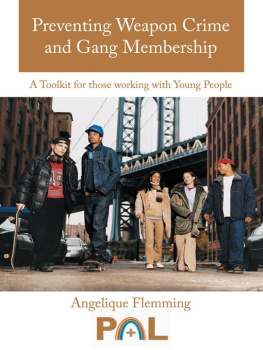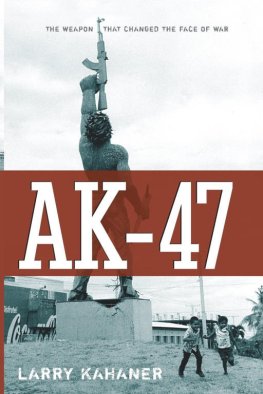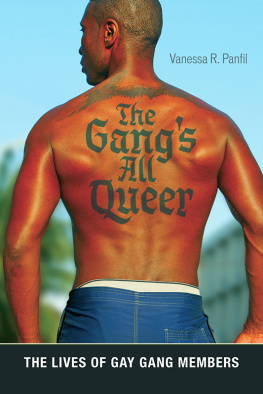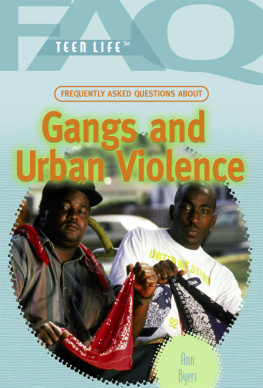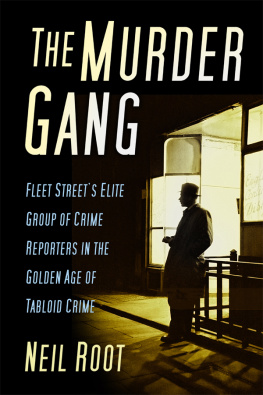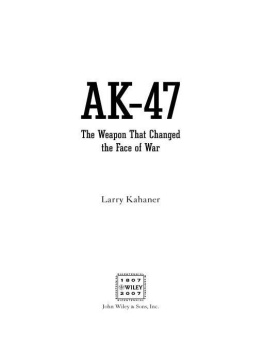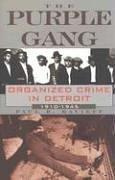Preventing Weapon Crime and Gang Membership
A Toolkit for those working with Young People
Angelique Flemming


AuthorHouse UK Ltd.
500 Avebury Boulevard
Central Milton Keynes, MK9 2BE
www.authorhouse.co.uk
Phone: 08001974150
2011 Angelique Flemming. All rights reserved.
No part of this book may be reproduced, stored in a retrieval system, or transmitted by any means without the written permission of the author.
Published by AuthorHouse 4/30/2012
ISBN: 978-1-4520-4021-9 (sc)
This book is printed on acid-free paper.
Because of the dynamic nature of the Internet, any web addresses or links contained in this book may have changed since publication and may no longer be valid. The views expressed in this work are solely those of the author and do not necessarily reflect the views of the publisher, and the publisher hereby disclaims any responsibility for them.
Contents
Knife or Life
(Some creative activities)
Background to this book
This resource draws evidence from many official sources such as British Crime Surveys, Offending, Crime and Justice Surveys and Youth Justice Surveys commissioned by the Youth Justice Board and carried out by Ipsos MORI.
The suggested activities within this book are based on the Home Offices national initiative, TKAP (Tackling Knives Action Programme) that was rolled out in 2009.
This national initiative directed local services to tackle weapon carrying and knife crime incidents by placing a focus on the following areas:
Attitudes to knife crime
Peer education
Social implications
Health and medical implications
First Aid and public space awareness
Managing conflict
The law
Victim Awareness
This book is aimed at those working with children and young people and acts as a supportive resource and toolkit which can be used to engage young people in understanding the risks and consequences of weapon crime and gang affiliation. This journey of learning should allow young people to become fully informed with regards to decision making and positive group membership.
Suggested activities throughout this resource are based around the key areas mentioned above. Although these activities are encouraged, they are not prescriptive. Therefore, as a professional working with young people, you should pitch activities suited to learner needs, such as age, ability and preferred learning style.
This toolkit was developed by a lead author of the Liverpool Youth Offending Service (YOS) Knife Possession Prevention Programme (KPPP).
An overwhelming positive formal review and evaluation of the KPPP, undertaken by the Home Office led to the authour, Angelique Flemming, receiving an award in 2009 from the Criminal Justice Service for outstanding contribution towards tackling knife crime.
This award led the authour to believe that through an educative approach, young people could become empowered to make independent decisions in relation to weapon carrying. The ranges of activities provided throughout this toolkit are aimed at achieving this outcome and may be used with any age group.
Information and guidance is provided throughout this book to allow those using the toolkit to become familiar with the background knowledge needed to enhance understanding of weapon related crime and gang membership.
Using this Toolkit
The overall aims and learning outcomes for young people taking part in weapon carrying, crime and gang membership awareness lessons are;
For young people to clearly understand what is classed as an offensive weapon by being given the opportunity to receive and relay legislative information
For young people to positively support peer learning and influence through group debate, discussion and reflection, around the management of conflict and prevention of reprisal
For young people to become fully informed about the physical, criminal and social consequences associated with weapon crime by studying public, media and societal views
For young people to demonstrate understanding of the physical, emotional, financial and psychological impact for victims of weapon crime by studying, reviewing and concluding case study material
For young people to become informed about the formation of gangs and the associated risks and consequences attached to gang membership, by studying the characteristics and criminal operations of gangs
For young people to have the opportunity to use their peer dialogue within a safe environment to find alternative, safe strategies, which will hopefully allow all students to feel safe that weapon carrying amongst their own peer group has been agreed as wrong, dangerous and forbidden
Legislation
Some of the reasons
Weapon carrying is not a new phenomenon. What is new, are the areas of criminality relating to the carrying of weapons and the age of those carriers increasingly falling within the young person population.
Knife carrying is the most common form of knife related offences but it creates no specifically recorded harmed victims until the knife is actually used to inflict injury.
UK Firearms, Knife and Weapon laws have evolved over the past 50 years. Chronologically, these laws are;
The Prevention of Crime Act (1953)
Law - It became an offence to have an offensive weapon in a public place: including any article made or adapted for use for causing injury to any person.
Penalty - Up to 4 years imprisonment and/ or fine
The Restrictions of Offensive Weapons Act (1959)
Law - The manufacture, sale, purchase, hire or lending of Flick knives and Gravity knives became banned.
Penalty - Up to 6 months imprisonment and / or fine up to 5000.
The Criminal Justice Act (1988)
Law - Published a list of prohibited Martial Arts style weapons. It became an offence to carry an article with a blade or sharp point in a public place.
Penalty - Up to 6 months imprisonment and / or fine up to 5000.
The Public Order Act (1994)
Contains a power under which a Police Officer of Inspector rank or above can authorise Police officers, within a given area, to stop and search for offensive weapons or dangerous instruments for up to 24 hours.
The Offensive Weapons Act (1996)
Law - Prohibited the sale of knives to under 16 year olds.
Penalty - Up to 6 months imprisonment and / or fine up to 5000
The Knives Act (1997)
Law - Prohibits the sale of Combat knives.
Penalty - Up to 2 years imprisonment and / or fine.
Violent Crime Reduction Act (2006)
Law This Act introduced the following restrictions;
Banned the sale of knives to anyone under 16 years of age
Raised the minimum age ( up from 16 to 18 years of age) at which a young person could buy a knife/bladed article.
Introduced powers for School Heads and teachers to search pupils for knives
Reduced the threshold for a Police Constable to enter the school grounds and search suspected knife carriers
Created a new offence of using another person to mind or secure a weapon
Created an aggravated offence where the offence involves a child or young person
Generally speaking, knives where the blade folds into the handle (Swiss Army Penknife) are not illegal. However, the blade length had to be less than 3inches, if being carried in public. Also, if this small blade is used to threaten or harm someone else then that possession becomes illegal rather than legal.
Next page
